Chipper5783
Super User
Another thread on lathe parting tools. Over the years I have tried / used a few different parting tools and found the GTN style carbide insert works well for my use (with the clamp in block for a regular tool holder). The generic HSS blade and holder that is commonly included in a qctp set looks good in that it sets the blade in close to the tool post, but for me rarely seemed to work well and was relegated to use on soft materials. The CXA I had already modified by cutting a relief for the T portion of the blade (that didn’t seem to help much).
The Aloris71 appears to combine the blade pulled in close and the ability to use carbide inserts. I don’t have one, expensive. I like to try to use the tools I already have.
On a recent project, I popped the end off a GTN holder blade (darn) - hey, that’s an opportunity to improve the little used parting tool holders! Pictured here is the before and after, two holders: a CXA phaseII and an ”A” size 40 position. The blades were 1” tall, now trimmed to 3/4” - one at GTN2 & GTN3, can fit either holder. A new clamp block was needed on the 40P, and skimming in a 15 degree bevel on the CXA. The CXA incorporates 4 degrees of back rake, perhaps chips will flow off a little easier? The blades are not quite as strong, so paying attention and not pushing it too hard may be important. I’m looking forward to trying them out.
The Aloris71 appears to combine the blade pulled in close and the ability to use carbide inserts. I don’t have one, expensive. I like to try to use the tools I already have.
On a recent project, I popped the end off a GTN holder blade (darn) - hey, that’s an opportunity to improve the little used parting tool holders! Pictured here is the before and after, two holders: a CXA phaseII and an ”A” size 40 position. The blades were 1” tall, now trimmed to 3/4” - one at GTN2 & GTN3, can fit either holder. A new clamp block was needed on the 40P, and skimming in a 15 degree bevel on the CXA. The CXA incorporates 4 degrees of back rake, perhaps chips will flow off a little easier? The blades are not quite as strong, so paying attention and not pushing it too hard may be important. I’m looking forward to trying them out.
Attachments
-
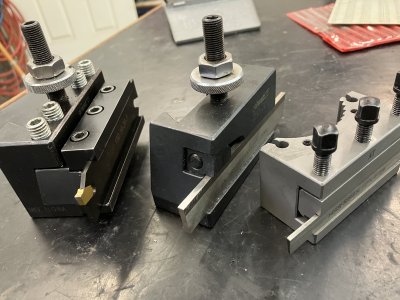 98C71548-4DC5-4B30-8DFE-43F133983158.jpeg408 KB · Views: 25
98C71548-4DC5-4B30-8DFE-43F133983158.jpeg408 KB · Views: 25 -
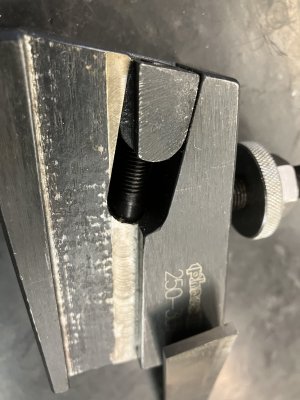 F17157AD-A2A2-4D3E-A98E-CBAC566760B4.jpeg363.8 KB · Views: 26
F17157AD-A2A2-4D3E-A98E-CBAC566760B4.jpeg363.8 KB · Views: 26 -
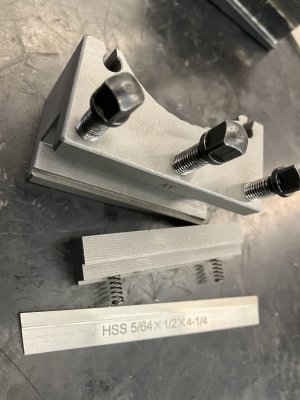 E34A62BE-C65A-4C97-A7A7-AB6B81D5C577.jpeg341.6 KB · Views: 25
E34A62BE-C65A-4C97-A7A7-AB6B81D5C577.jpeg341.6 KB · Views: 25 -
 FE503E47-41DA-4C8D-B052-D1ACED3425F2.jpeg385.1 KB · Views: 24
FE503E47-41DA-4C8D-B052-D1ACED3425F2.jpeg385.1 KB · Views: 24 -
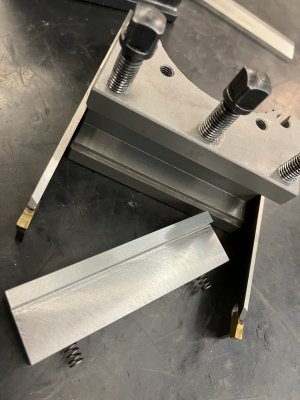 01C64116-2915-4B02-9DA0-37ED33FCC9C3.jpeg361.5 KB · Views: 24
01C64116-2915-4B02-9DA0-37ED33FCC9C3.jpeg361.5 KB · Views: 24 -
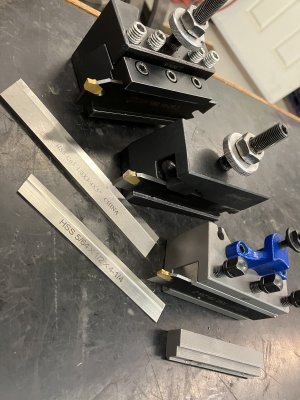 25618B07-B64B-4490-AC73-DAC4FBD3C212.jpeg433.7 KB · Views: 24
25618B07-B64B-4490-AC73-DAC4FBD3C212.jpeg433.7 KB · Views: 24
